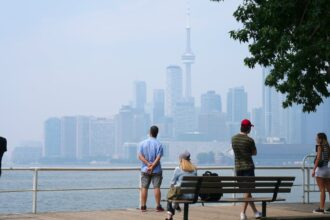The acrid smell of smoke hanging over Canadian cities has become an unwelcome summer tradition as wildfire seasons grow increasingly severe. Against this backdrop, Canada’s federal, provincial, and territorial environment ministers have taken a significant step forward, endorsing updated Canadian Ambient Air Quality Standards (CAAQS) that aim to better protect public health in an era of climate-intensified challenges.
Meeting in Halifax last week, the ministers reached consensus on strengthening air quality guidelines for fine particulate matter, nitrogen dioxide, ozone, and sulfur dioxide—pollutants that pose serious health risks and have been linked to respiratory illness, heart disease, and premature death. These updated standards represent the first major revision since 2020 and come after consecutive record-breaking wildfire seasons that blanketed much of the country in dangerous smoke.
“We’re seeing unprecedented impacts from climate change affecting air quality across the country,” said Steven Guilbeault, Canada’s Minister of Environment and Climate Change. “These new standards acknowledge the growing body of scientific evidence showing health impacts at lower pollution levels than previously understood.”
The revisions follow recommendations from health experts who have increasingly warned that Canada’s previous air quality thresholds were insufficient to protect vulnerable populations. According to Health Canada data, air pollution contributes to approximately 15,300 premature deaths annually in Canada, with economic impacts estimated at $120 billion per year.
Notably, the updated standards include more stringent guidelines for PM2.5—microscopic particles found in wildfire smoke that can penetrate deep into the lungs and enter the bloodstream. The revised threshold lowers acceptable levels by nearly 25 percent, bringing Canada more in line with World Health Organization recommendations.
Provincial environment ministers expressed varied reactions. While all endorsed the standards, some raised concerns about implementation timelines and costs. Alberta’s representative emphasized the need for “realistic targets that don’t unduly burden industry,” while British Columbia’s minister highlighted the urgent need for stronger protections given the province’s recent wildfire experiences.
Environmental advocacy groups have cautiously welcomed the changes while noting they remain voluntary guidelines rather than legally enforceable regulations. “This is progress, but without enforcement mechanisms, we question how effective these standards will be in practice,” said Sierra Club Canada spokesperson Maria Rodriguez.
The updated standards will be phased in beginning January 2025, with full implementation expected by 2030. Federal officials confirmed that additional funding will be provided to provinces and territories to improve air quality monitoring networks, particularly in remote and Indigenous communities that have historically lacked adequate coverage.
Climate scientists point out that the wildfire crisis driving these changes shows no signs of abating. According to Canada News reports, Canada’s wildfire season has started earlier and lasted longer in recent years, with the area burned in 2023 exceeding 18 million hectares—more than six times the 10-year average.
Dr. Sarah Williams, a respiratory specialist at Toronto General Hospital, called the standards “a necessary adaptation to our new climate reality,” adding that “these aren’t theoretical concerns—we’re seeing real patients with worsening asthma, COPD, and other conditions directly linked to poor air quality from wildfires.”
The updated standards also include provisions for exceptional events like wildfires, allowing for separate tracking of natural versus human-caused pollution—a distinction that provinces had requested to avoid being penalized for events beyond their control.
As Canadians increasingly monitor air quality apps with the same attention once reserved for weather forecasts, the question remains: will these new standards meaningfully protect public health as climate change continues to intensify the very conditions they’re designed to address?










